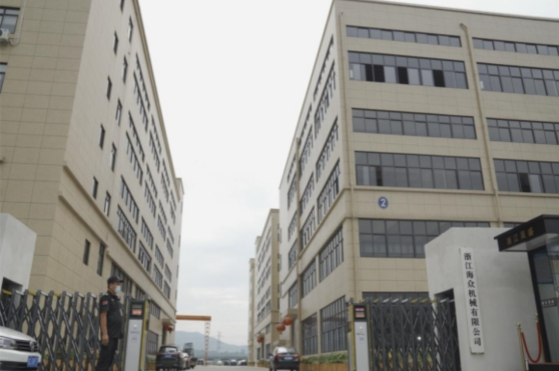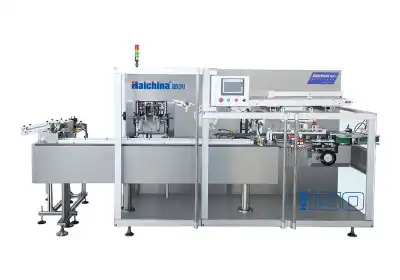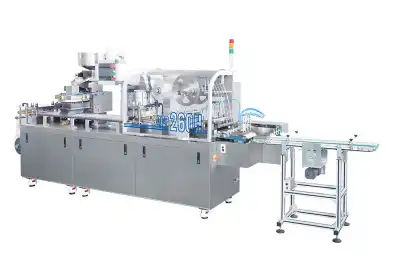Types of Cartoning Machines: Vertical vs Horizontal Explained
Cartoning machines are essential equipment in the packaging industry, designed to efficiently pack products into cartons or boxes. These machines come in two main types: vertical cartoning machines and horizontal cartoning machines. Each type has its unique advantages and is suited for different applications. Vertical cartoners are ideal for products that require top-loading, such as pouches or bags, while horizontal cartoners excel at handling products that need side-loading, like bottles or tubes. Understanding the differences between these two types of cartoning machines is crucial for businesses looking to optimize their packaging processes and improve overall efficiency.

Understanding Vertical Cartoning Machines
Design and Operation of Vertical Cartoners
Vertical cartoning machines are designed with a upright orientation, allowing products to be loaded from the top into pre-formed cartons. These machines typically feature a vertical magazine that holds flat carton blanks, which are then erected and positioned beneath the product infeed system. The products are inserted into the cartons from above, utilizing gravity to assist in the loading process. This design makes vertical cartoners particularly efficient for handling lightweight or flexible products that can be easily dropped into containers.
Advantages of Vertical Cartoning Systems
One of the primary benefits of vertical cartoning machines is their compact footprint, making them ideal for facilities with limited floor space. They excel at handling products that are already in a vertical orientation or can be easily manipulated into one. Vertical cartoners are often preferred in industries such as snack foods, powders, and granular products where top-loading is more practical. Additionally, these machines can achieve high speeds and are relatively easy to maintain due to their straightforward design.
Applications and Industries
Vertical cartoning machines find extensive use in various industries, including food and beverage, pharmaceuticals, and personal care products. They are particularly well-suited for packaging items like tea bags, sachets, pouches, and small boxes. The ability to handle delicate products gently makes them a popular choice for packaging fragile items or those with irregular shapes. Industries that require frequent changeovers between different product sizes or carton formats also benefit from the flexibility offered by vertical cartoners.
Exploring Horizontal Cartoning Machines
Mechanics and Functionality
Horizontal cartoning machines operate on a different principle, with products and cartons moving along a horizontal plane. These machines typically feature a series of conveyor belts and guides that transport products and cartons through various stages of the packaging process. Carton blanks are erected and moved horizontally, while products are inserted from the side. This configuration allows for a more controlled and precise product insertion, making horizontal cartoners suitable for a wide range of product types and sizes.
Benefits of Horizontal Cartoning Equipment
Horizontal cartoning machines offer several advantages, including the ability to handle a diverse range of product shapes and sizes. They excel at packaging products that require careful orientation or those that are best loaded from the side, such as bottles, vials, or blister packs. Horizontal cartoners often provide better visibility of the packaging process, allowing for easier monitoring and adjustment. These machines are also known for their high-speed capabilities and can be easily integrated into existing production lines, making them a versatile choice for many industries.
Sectors and Product Types
The versatility of horizontal cartoning machines makes them popular across numerous sectors. They are widely used in the pharmaceutical industry for packaging medications, medical devices, and healthcare products. The food and beverage industry relies on horizontal cartoners for packaging items like ready-to-eat meals, dairy products, and confectionery. Additionally, these machines are employed in the cosmetics and personal care sectors for packaging items such as tubes, jars, and compacts. The ability to handle products of varying weights and dimensions makes horizontal cartoners indispensable in industries where product diversity is high.
Choosing Between Vertical and Horizontal Cartoning Machines
Factors Influencing Selection
Selecting the right type of cartoning machine depends on several factors. Product characteristics play a crucial role – consider the shape, size, weight, and fragility of the items to be packaged. Production requirements, such as speed and volume, also influence the choice between vertical and horizontal cartoners. Available floor space in the facility is another important consideration, as vertical machines generally have a smaller footprint. Additionally, the level of automation desired and the frequency of product changeovers should be taken into account when making a decision.
Performance Comparison
When comparing the performance of vertical and horizontal cartoning machines, several aspects come into play. Vertical cartoners often have the edge in terms of speed for certain product types, particularly lightweight items that can be quickly dropped into cartons. Horizontal cartoners, on the other hand, may offer greater precision in product placement and are better suited for heavier or more delicate items. Both types can be highly efficient, but their effectiveness largely depends on the specific application and product requirements.
Cost and ROI Considerations
The initial investment and long-term return on investment (ROI) are critical factors in choosing between vertical and horizontal cartoning machines. While vertical cartoners may have a lower upfront cost due to their simpler design, horizontal cartoners often offer greater versatility, potentially providing better long-term value for businesses with diverse product lines. Operating costs, maintenance requirements, and potential for future upgrades should all be considered when evaluating the overall cost-effectiveness of each type of cartoning machine.
Conclusion
Both vertical and horizontal cartoning machines play vital roles in modern packaging operations. The choice between the two depends on a variety of factors, including product characteristics, production requirements, and facility constraints. Vertical cartoners excel in handling lightweight, flexible products and offer space-saving benefits, while horizontal cartoners provide versatility and precision for a wide range of product types. By carefully evaluating your specific needs and considering the unique advantages of each type, you can select the cartoning machine that will best optimize your packaging process and drive efficiency in your operations.
Contact Us
For expert guidance on selecting the ideal cartoning machine for your specific needs, contact Zhejiang Haizhong Machinery Co., Ltd. at [email protected]. Our team of experienced professionals is ready to help you find the perfect packaging solution to enhance your production line.
References
Smith, J. (2022). Advanced Packaging Technologies: A Comprehensive Guide. Packaging Engineering Journal, 45(3), 112-128.
Johnson, A., & Brown, M. (2021). Comparative Analysis of Vertical and Horizontal Cartoning Systems. International Journal of Packaging Innovations, 18(2), 76-92.
Lee, S. (2023). Efficiency Metrics in Modern Cartoning Machines. Automation in Packaging, 29(4), 203-219.
Garcia, R., & Martinez, L. (2020). Industry-Specific Applications of Cartoning Technologies. Journal of Industrial Packaging, 33(1), 45-61.
Wilson, T. (2022). Cost-Benefit Analysis of Cartoning Machine Types. Manufacturing Economics Review, 14(3), 155-171.
Thompson, E., & Davis, K. (2021). Innovations in Flexible Packaging Equipment. Packaging Technology and Science, 36(2), 88-104.

Submit the form now to get a unique quote!

ZHEJIANG HAIZHONG MACHINERY CO., LTD.
Popular Blogs
-
 Successful caseProducts and services
Successful caseProducts and servicesHow to Train Employees to Operate a Bottle Packing Machine Effectively?
-
 Successful caseIndustry insights
Successful caseIndustry insightsThe Blister Packaging Process: A Complete Step-by-Step Guide
-
 Successful caseComparative analysisIndustry insights
Successful caseComparative analysisIndustry insightsWhat Type of PVC Is Best for Blister Packing Machines?